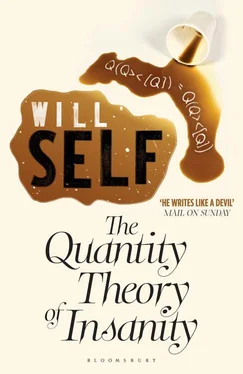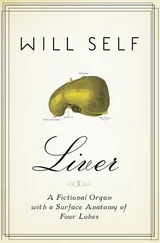Prudence got the better of me. I knew that I had to effectively gain control of the Quantity Theory. To unleash it on the world half-cocked was to ensure only that the massive industry of thought, research and practice which I could foresee would be within the domain of others. If I wanted to control I would have to plot, scheme, machinate, and above all lay my plans carefully.
Accordingly the next morning I sat down to write letters to my fellow student/analysands from Chelmsford: Sikorski, Hurst, Harley, and of course Zack Busner. (I would have asked Simon Gurney too were it not that he had given up his practice to become a sculptor.) I invited them to come to Birmingham to have dinner with me and discuss an idea which I thought might be of interest to them.
I waited for three days … a week … no word from anyone. The evening of the planned rendezvous arrived and to my surprise so did they. One after another. They had all driven up from London together in Adam Harley’s car. But they had got into an argument at Toddington Services about the culturally relative perception of post-natal depression. Busner took the view that post-natal depression was an entirely patriarchal phenomenon, and that there were tribal societies where the matrilineal took precedence, that were completely free of it. Adam Harley took the view that Busner was a ‘pretentious twerp’ and followed up this criticism by shoving a Leviathan-burger, smothered with salad cream and dripping gobbets of part-grilled, processed shrimp, straight into Busner’s face.
After arriving, I sat them down and made them tea. I wouldn’t even let Busner clean up; I launched without any preamble into a description of my revelation. They were restless and barely prepared to listen, but I only had to hold their attention for a few minutes before the theory bit into them. Of course there was something in my manner that they sensed was different. Something in the way I whiffled towards the ceiling, the way I fellated ballpoint pens, the way I stood with one shoulder far, far higher than the other so that I appeared to be dangling from a meat hook, that held them, cowed them, made them realise that it was I who was to replace Alkan in their affections.
We formed a small multi-disciplinary team. The aim was to develop the Quantity Theory in relation to microsocietal groupings. Alkan’s students were notable for the diversity of the paths they had followed since leaving Chelmsford; within our small group we had all the necessary disciplines represented.
We know already what had happened to Busner. Phillip Hurst, whose father had massively endowed the Chelmsford campus, had moved from pure psychology into psychometrics and statistics. His help in developing the quotient concept was to prove invaluable. Adam Sikorski had moved on from the crude behaviouristic models that he had constructed with such glee when a postgraduate. No longer did he turn rats into alcoholics, heroin addicts and thieves — just to show that he could. Now he turned armadillos into anorexics, narwhals into neurasthenics and shire horses into hopeless, puling, agoraphobics. Sikorski had secured generous government funding for these experiments and his familiarity with the ins and outs of political in-fighting was to prove at the outset of great service to the Quantity Theory. Of course ultimately it alienated him entirely. As for Adam Harley — Harley the campaigner, Harley the idealist, Harley the visionary — he was the ultimate fifth columnist. He was sitting in a cold basement in Maida Vale, abasing himself before the adolescent angst and middle-aged spread of anxiety that his ‘clients’ laid before him. Harley, with his bloodhound eyes which threatened to carry on drooping until they made contact with his roll-neck, persuaded me of his concern, his humanity, his devotion to the very real therapeutic benefits of the Quantity Theory, but all the time …
Our first move was to look around for a suitably small, self-contained societal unit on which we could test the theory. We were fortunate indeed to have my cousin Sid. Sid had never been mentally ill, exactly. However, like other rather introverted children, he had had a number of ‘imaginary friends’. The difference in Sid’s case was that although he abandoned his imaginary friends during pre-puberty, he met them again at university. Where they all pursued a lively social life together.
Sid was now living in a small commune in the Shetland Islands, where he and his fellow communards were dedicated to the growing of implausibly large hydroponic onions. The other members of the commune were eccentric but not quite as unhinged as Sid. They believed that their ability to grow the four-foot legumes was wholly predicated on the orbital cycle of Saturn’s satellite, Ceres.
For a number of reasons this commune represented an almost perfect test bed for our research. It was remote, self-contained, and possessed a readily quantifiable sanity quotient which needed the bare minimum to assess. In addition the area around the commune contained several other examples of experimental living, left on the beach by the receding wave of the previous decade. It would be easy, therefore, to find a suitable control.
The Quantity Theory Multi-disciplinary Team set off for Shetland without further ado. Once there we would measure the quotient and then set about either exacerbating or palliating Sid. We then hoped to observe what effect, if any, this had on the other eight commune members.
It’s now difficult to appreciate the then popularity of this sort of exercise in communal living, and frankly I found it difficult to appreciate at the time. I think in retrospect that all those ‘alternative’ modes of living were little more than exercises in arrested development. Sleeping in bags, arguing and hair-pulling. It was really all a sort of giant ‘let’s camp in the garden, Mummy’ session. The onion-growers’ camp was no exception to this rule. A huddle of bothies, caulked, in some places well and with close attention, but in others simply stuffed up with back numbers of the Shetland Times . When the afternoons grew dark and the wind whistled over the tedious landscape, the rain drove out of the well of darkness and shot in distinct drops through the central living area, where pasty-faced lads and lasses squatted, hooking their hair back behind their ears, absorbed in french knitting, macramé, and writing home.
In this context the team were called upon to operate just as much as anthropologists as psychologists. There was no way that the commune was going to accept us for the period of time necessary to complete our experiments if we didn’t, at least superficially, show some sympathy with the ideas they espoused. So it was that I found myself night after night, the dirty denim of my acquired ‘jeans’ slow-burning my bent knees, as one communard or other, their minds stupidly stupefied by marijuana, attempted to discourse on ley lines, shiatsu, or some Tantric rubbish.
Of course we took our own mental profile, our own sanity quotient. Both as a group per se and combined with the communards. We then were able to allow for it in the context of the fluctuations we attempted to engineer. When the experiments were completed and the data collected from the ‘control’ commune, where Phillip Hurst had been conducting his own lonely vigil, we found that the results were far better than we could have hoped for.
The manipulations of the given distribution of sanity within the commune had, by any standards, been crude. When we wanted to palliate Sid’s symptoms: his delusions, his paranoid fantasies, and especially his lively but imaginary social life, we would simply sedate him heavily with Kendal Mint Cake laced with Largactil. He stopped hearing voices, and the world ceased to resolve itself into a hideously complex, Chinese marquetry of interlocking conspiracies. Even his ‘friends’ went away. All but one, that is. An enigmatic welder from Wearside called George Stokes still insisted on manifesting himself.
Читать дальше












